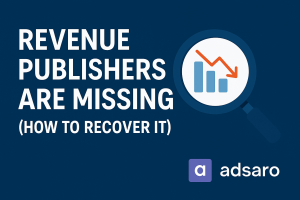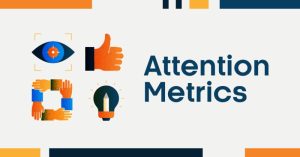In today’s fast-paced digital landscape, programmatic advertising has become the backbone of online marketing. Its efficiency, scalability, and precision make it an indispensable tool for advertisers. However, as we embrace automation and data-driven decision-making, there’s an underlying risk that often goes unnoticed—data leakage in programmatic advertising. Data leakage refers to the unintended exposure of sensitive information, often to unauthorized parties. This hidden threat can compromise privacy, erode user trust, and damage the performance of ad campaigns. In this blog, we will explore the concept of data leakage in programmatic advertising, examine how it occurs, and outline the critical steps advertisers must take to protect their data and ensure the success of their campaigns.
Understanding Data Leakage in Programmatic Advertising
Programmatic advertising involves several players, including advertisers, publishers, demand-side platforms (DSPs), supply-side platforms (SSPs), data management platforms (DMPs), and other third-party vendors. These platforms gather and process enormous volumes of data to serve ads to the right audiences at the right time.
What is Data Leakage?
Data leakage refers to the unauthorized or unintended transfer of sensitive or confidential information to outside parties. In the context of programmatic advertising, data leakage occurs when user data, campaign performance metrics, or other sensitive information is exposed or shared without proper consent or security measures.
This can happen in several ways, such as through insecure data transfers, weak access controls, or improper handling of information by third-party vendors or platforms. Data leakage can lead to privacy violations, fraud, reputational damage, and financial loss, making it a significant risk in industries reliant on data-driven technologies like programmatic advertising. In the context of programmatic advertising, this usually refers to:
- Personal Data Exposure: The leaking of personally identifiable information (PII) or sensitive user data without consent.
- Behavioral Data Exposure: The leaking of data about users’ browsing behavior, preferences, and online activities.
- Ad Campaign Data Exposure: The unauthorized sharing of data related to campaign performance, such as clicks, conversions, or cost-per-click (CPC), which could compromise the integrity of ad performance.
When data leaks, it can undermine the entire ecosystem’s trust and disrupt the functioning of programmatic advertising.
How Does Data Leakage Happen?
In the complex and fragmented environment of programmatic advertising, data can be exposed or leaked at various points in the process. Understanding these points of leakage can help advertisers and organizations implement better safeguards.
1. Third-Party Integrations
Most programmatic ad campaigns depend on multiple third-party vendors. These vendors may include data providers, DSPs, SSPs, or other entities that handle user data, ad inventory, or optimization algorithms. When these third-party vendors are not properly secured or fail to implement privacy controls, they can unintentionally expose sensitive data.
Example:
An SSP might unknowingly share detailed user behavior data with an unauthorized partner, or an ad exchange might leak audience data to a third-party data provider without the advertiser’s consent.
2. Insecure Data Transfers
During the real-time bidding (RTB) process, various parties involved in a transaction transfer large amounts of data. If these parties do not properly encrypt or secure the data, malicious actors can intercept it.
Example:
Unauthorized entities can access data transmitted over an insecure connection and use it for malicious purposes, such as identity theft or fraud.
3. Weak Platform Security
Many platforms in the programmatic ecosystem don’t have robust security measures in place to protect sensitive data. Weaknesses in data storage, inadequate access control, or poor encryption can lead to data leaks.
Example:
A hacker might breach a data management platform (DMP) that stores user data without encryption, exposing a massive database of personal user information.
4. Lack of Transparency in the Supply Chain
The programmatic ecosystem is extremely complex, involving numerous intermediaries between the advertiser and the publisher. This lack of transparency can lead to situations where advertisers don’t know exactly where their data is being shared or who has access to it.
Example:
An ad exchange may unknowingly pass on user data to a vendor without the advertiser’s knowledge, creating a data leakage scenario.
5. Improper Data Access Permissions
Employees or partners within the programmatic ecosystem may have access to data that they don’t need. If access controls aren’t tightly managed, data can leak through human error or malicious insiders.
Example:
An employee with access to campaign performance data might inadvertently share this information with unauthorized people, compromising the campaign’s competitiveness or the advertiser’s strategy.
The Risks and Consequences of Data Leakage in Programmatic Advertising
Data leakage in programmatic advertising poses several risks to both advertisers and users:
1. Privacy Violations
At the heart of the issue is the risk of privacy violations. Data leakage often involves exposure to personal or identifiable data that should remain private. This breach of privacy can lead to:
- Identity Theft: Malicious actors gaining access to PII can use it for fraud or identity theft.
- Regulatory Consequences: Privacy laws like GDPR, CCPA, and others require companies to protect user data. Failure to do so can result in hefty fines, lawsuits, and damaged brand reputation.
2. Ineffective Ad Targeting and Poor Campaign Performance
Data leakage can render targeting efforts ineffective. If advertisers or platforms are using incomplete or inaccurate data due to leakage, campaigns may fail to reach the right audience. This results in:
- Wasted Ad Spend: Serving ads to the wrong audience leads to a higher cost per acquisition (CPA) and wasted budget.
- Poor Return on Investment (ROI): If advertisers are not optimizing based on accurate, secure data, campaign performance suffers.
3. Damage to Reputation
For brands, trust is crucial. Data leakage undermines consumer trust, leading to potential reputation damage. This can cause:
- Consumer Distrust: Users are more likely to avoid brands that cannot protect their data.
- Loss of Business Relationships: Partners in the ad tech space may distance themselves from companies with weak data protection practices.
4. Legal Risks
Regulations like GDPR in Europe and CCPA in California impose stringent rules on how personal data is handled. Violating these rules can result in:
- Fines and Penalties: Companies found guilty of mishandling user data can face severe penalties.
- Class Action Lawsuits: Data leaks that affect many users may lead to lawsuits, especially if user consent was not properly obtained.
How to Prevent Data Leakage in Programmatic Advertising
Given the serious consequences of data leakage, advertisers and platforms must take active steps to prevent it. Here are several strategies to mitigate the risks:
1. Data Encryption
Encrypting data is one of the most effective ways to prevent leakage. Both data in transit and data at rest should be encrypted using strong encryption algorithms to protect it from being intercepted or accessed by unauthorized parties.
2. Strict Access Control
Only authorized personnel should have access to sensitive data. Implementing strong access control mechanisms, such as role-based access control (RBAC) and multi-factor authentication (MFA), ensures that only those who need access to the data can view or manipulate it.
3. Regular Audits and Vendor Vetting
Advertisers should conduct regular security audits of their third-party vendors to ensure they are following proper security protocols. They should only work with platforms that have demonstrated a strong commitment to data privacy and security.
4. Transparency in the Supply Chain
Advertisers should demand transparency from all parties in the supply chain, ensuring that they have full visibility into how data is being handled and shared. This can help identify any potential vulnerabilities before they result in a data leak.
5. Compliance with Privacy Regulations
It’s essential to stay up to date with privacy regulations like GDPR and CCPA. Compliance with these laws ensures that you’re legally protected and that users’ data is handled responsibly.
6. Use Privacy-First Ad Tech Platforms
Choose ad tech platforms that prioritize user privacy and data protection. These platforms are often more secure and provide better tools to monitor and control data flow, reducing the risk of data leakage.
Conclusion
Data leakage in programmatic advertising is a critical yet often overlooked threat that can have far-reaching consequences. From privacy violations to poor campaign performance and legal risks, the impacts are significant for both advertisers and users. However, with the right precautions—such as implementing strong encryption, vetting third-party vendors, ensuring transparency, and adhering to privacy regulations—advertisers can protect their data and avoid the pitfalls of data leakage. As the programmatic advertising ecosystem continues to evolve, safeguarding data will remain a top priority for maintaining trust, maximizing ad performance, and ensuring long-term success. Taking proactive steps now to secure your data will not only protect your campaigns but also reinforce your brand’s reputation in a data-driven world.








Leave a Reply